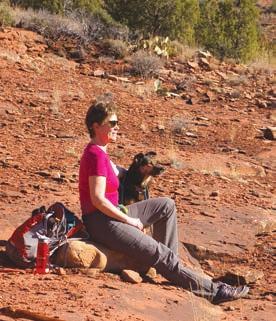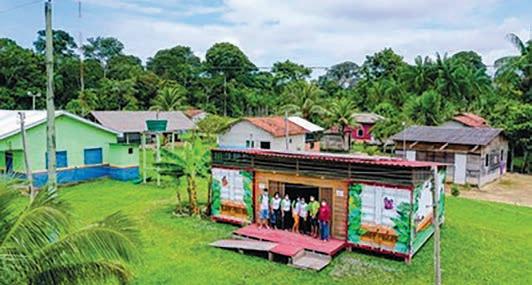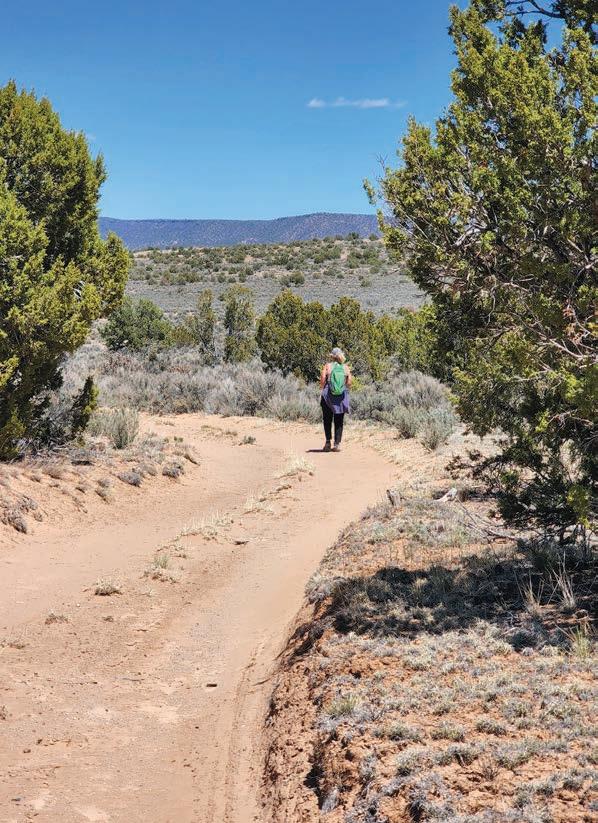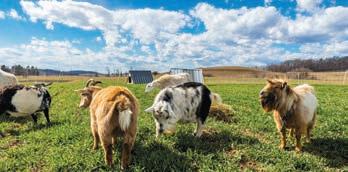Ground to Gut Link Between Soil and Human Microbiomes

Protecting Pets From Lyme Disease
Eating the Rainbow Benefits of a Diversely Colored Diet
Natural Solutions for Histamine Intolerance

Ground to Gut Link Between Soil and Human Microbiomes

Protecting Pets From Lyme Disease
Eating the Rainbow Benefits of a Diversely Colored Diet
Natural Solutions for Histamine Intolerance



Check out and post “What’s New”. Be Inspired, find opportunities, upcoming events & more
& join 200+ RWH Topic Communities. Power Search centralized local & global knowledge & resources




Your way from thought leaders and experts (curated articles, online webcasts, courses, live events
With your best matched, screened providers and organizations, plus like-minded members
With top doctors & experts in live video Q&A. Plus get members-only discounts on their programs
Access to a vast growing catalog of courses. Plus, curate your own library to track your progress
On top provider and expert services, healing programs, training, courses & products
Top In-Hub thought leaders and missionaligned partner communities with exclusive benefits



Find additional articles online at NaturalAZ.com. Go to the homepage and explore local businesses and articles exclusively from Natural Awakenings.


on the Advantages of Regenerative Farming


health briefs
Pilot Program Reveals Benefits of Four-Day Work Week

Effects of Cannabis Use Before and After Surgery
global briefs

Repairing the Planet’s Lungs

New Environmental Justice Initiative
Check out the latest events at naturalaz.com/calendar

Natural Awakenings is a network of natural lifestyle magazine publishers empowering local communities with knowledge, resources and connections to lead healthier lives on a healthy planet.


18
18 THE MICROBIOME CONNECTION
How Soil and Human Health Are Related
21 THE SWEET TAPESTRY OF SUMMER
22 HUES OF HEALTH
Benefits of a Colorful Diet
26 GUT HEALTH FOR KIDS
Clever Strategies for Picky Eaters
28 FIGHTING CLIMATE CHANGE IN THE GARDEN
Regenerative Techniques for a Healthy Ecosystem
30 PROTECTING PETS FROM LYME DISEASE

Prevention and Symptom Management Tips
32 TOO MUCH HISTAMINE
To advertise with Natural Awakenings or request a media kit, please email PhoenixAds@NaturalAZ.com
Deadline for ads: the 10th of the month.
EDITORIAL SUBMISSIONS
Go to NaturalAZ.com/pages/contact to inquire about editorial opportunities. Deadline for editorial: the 10th of the month.
CALENDAR SUBMISSIONS
Calendar events are online only, and can be submitted at NaturalAZ.com/calendar
NATIONAL MARKETS
Advertise your products or services in multiple markets!
Natural Awakenings Publishing Corp. is a growing franchised family of locally owned magazines serving communities since 1994. To place your ad in other markets call 239-206-2000. For franchising opportunities call 239-206-2000 or email NaturalAwakenings@KnoWEwell.com.
Natural Solutions to an Excessive Allergic Response

34 GREEN EXERCISE
Reconnecting With Nature
PUBLISHER
Tracy Patterson, BSc, MES DESIGN & PRODUCTION
Vegetorium, LLC
COPY EDITOR
Sara Gurgen
DIGITAL PLATFORMS
Hass Solutions Locable
Natural Awakenings – Phoenix 17470 N Pacesetter Way Scottsdale, AZ 85255 Tracy@NaturalAZ.com NaturalAZ.com


NATIONAL TEAM
CEO Kimberly B. Whittle

National Editor Sandra Yeyati
Editor Brooke Goode
Copy Editor/Proofreader Melanie Rankin
Design & Production
National Advertising

s soon as I read the article in this month’s Inspiration section, “The Sweet Tapestry of Summer,” on page 21, I couldn’t help but think of one of my favorite places to be in the summer—the forest. Specifically, a coniferous forest of spruce or pine trees. There is nothing like the scent of pine and sap wafting through the trees on warm days. I’ve always loved this woodsy “perfume” and have often thought that its extreme uniqueness would be impossible to replicate in another environment. Even if you could find a candle or incense that captured the heady aroma, it would be missing a major ingredient: the quiet beauty of the forest itself. Quiet, except for the sound of the breeze moving through the trees, birds chirping here and there, and the odd chipmunk chattering away. But these sounds typically go unnoticed unless one is still for a time, relaxing and melting into the ambiance of nature.
Living on our horse ranch was wonderful because we were situated in the middle of 160 acres in a clearing with forest all around, and a river ran through the north end of our property. It was our own private nature reserve, with moose, deer, elk, coyotes, foxes, bears, mountain lions and endless bird species (eagles, owls, bluebirds and many others). The connection with nature was intense—we lived in a little house in the midst of it all. The wildlife just roamed around like we were part of the scene, because we were.
And the colors! How vivid they were: the deep blue of the sunny summer sky peeking through the forest canopy; the almost fluorescent appearance of the vegetation after a rain or on a cloudy day; the earthy tones—browns, tans, grays, greens; and the brilliant hues of the forest flowers and berries.
Gabrielle W-Perillo
Lisa Doyle-Mitchell
© 2023 by Natural Awakenings. All rights reserved. Although some parts of this publication may be reproduced and reprinted, we require that prior permission be obtained in writing.
Natural Awakenings is a free publication distributed locally and is supported by our advertisers. Please contact us to find a location near you.
We do not necessarily endorse the views expressed in the articles and advertisements, nor are we responsible for the products and services advertised. Check with a healthcare professional regarding the appropriate use of any treatment.
I think that those of us who take the time to sit still in the forest and smell the scents, listen to the sounds and view the colors are more likely to appreciate that this is a delicate ecosystem that we are part of, not separate from.
Please note that all deadlines (advertising and editorial) are the 10th of the month prior to the edition being published.
For example, July 10 is the deadline for all August edition submissions.



Spiritweave
Art Journeys is hosting Spiritweave with Sally Blevins, BFA, MA, LPC, as the artist guide November 1 through 5 at the Sonoran Desert Inn and Conference Center, in Ajo, Arizona.


Blevins has more than 40 years’ experience teaching art, 12 years’ experience providing art therapy, and is a skilled fiber and mixed media artist. She currently travels full time to various venues sharing her talents and providing an experience that is not only artful but creates a sense of renewal. She invites you to revive your spirit by joining her in mixed media art making and celebrating the Day of the Dead (November 2).
Retreatgoers will attend a private gallery opening and mural walk, a sound healing ceremony and dine on locally sourced cuisine while lodging at the Sonoran Desert Conference Center. They will learn their own visual language, create mixed media visual journal pages and a retablo/nicho, along with smaller inspirational art pieces in the lovely courtyard at the Conference Center.
This retreat is limited to 16 individuals in order to provide excellent access and care.


Cost: $1,400 (Wednesday evening through Sunday brunch). Price includes lodging, meals, art instruction and wellness activities; excludes transportation and one evening meal out. There will be a price for Ajo area residents that do not wish to include the lodging. There is a nonrefundable $75 registration fee, which is payable at Venmo/ Spiritweave. Register by email at Sally@ConnectTherapiesllc.com. A complete itinerary, including pricing and payment schedule, will be sent in response to your email. See ad, page 17.





and weekly. Memberships and packages are available.

Realign Your Life Wellness Center, in Mesa—conveniently located on Southern Avenue, between Mesa Drive and Stapley Drive—has two Harmonic Eggs, plus other services such as the Body Code energy healing, Quantum Touch energy healing, sound baths and Higher Guidance Life Coaching. Appointments can be booked online or by calling.
Egg creates the perfect environ-

only recently been brought back to use in modern times. The design of the egg is intentional and incorporates many aspects of sacred geometry and Tesla mathematics. The music and colors used for each session are also intentional and are customized for each client. This is what makes the Harmonic Egg unique.
By the end of the 50-minute session, the client feels deeply relaxed. Frequency of sessions will vary by person, depending on what they need help with, but the most common options are monthly, bimonthly


The center is owned by Jean and Steve Hanson. Jean is a certified Body Code practitioner, Higher Guidance Life Coach and author of Trust Your Higher Guidance: Align Your Life to Manifest the Joy and Success You Deserve. Steve is a certified Quantum Touch practitioner and certified sound bath facilitator.
For more information or to book appointments, visit RealignYourLifeAZ.com. Appointments can also be booked by calling 480-306-7321. See ad, page 15.

Electropollution—also known as electromagnetic fields (EMFs)—is all around us. While some EMFs are natural and good for us, like sunlight, others are unnatural and can impact our health in negative ways.
It is estimated that more than one-third of people have an “electrosensitivity” to EMFs. This is concerning since emerging wireless technology is only increasing our exposure to these various radiation fields. Some EMF-related symptoms include fatigue/weakness, sleep disturbances, headaches, brain fog, depression/anxiety, memory loss, heart palpitations, dizziness, skin problems, tinnitus and blood sugar imbalance.

Wi-Fi, wireless headphones, smart meters, cellphones, tablets, cellphone towers, high-efficiency lightbulbs, baby monitors and even in-home electrical wiring are all sources of little-known, potentially harmful EMFs.
But the good news is that you can do something to limit your exposure. Prime EMF Leaders conducts detailed inhome assessments to identify sources of EMFs using professional testing equipment. Once the sources are identified, you are provided with a mitigation plan to minimize exposure to harmful EMFs
in your living environment, resulting in a safe place where you can heal!



Mike Goral is the founder of Prime EMF Leaders. He is a graduate of Centennial College’s radio and television broadcasting program. He has also studied at the Building Biology Institute. For many years, he worked as a network technician and provided engineering support for a large-scale satellite data distribution network where he gained extensive knowledge about radio signals and signal transmission and used professional testing equipment to measure various radiation fields. After suffering from electrosensitivity in his own home, Goral learned various mitigation strategies that eliminated his symptoms. He was so inspired by all that he had learned that he began teaching these mitigation strategies to others. To connect with him, call/ text 480-360-4478 or email Info@PrimeEMFLeaders.com. Also visit PrimeEMFLeaders.com. See ad, page 10.

A new study published in Social Psychological and Personality Science has found that a person’s close relationships may either benefit or undermine physical health. The three-week study involving 4,005 participants looked at how both positive and negative relationship experiences affect the body, and how daily fluctuations in those interactions may influence changes in well-being, as reflected in self-reported stress levels and coping abilities, as well as blood pressure and heart rate reactivity biomarkers.

The researchers observed that people with more positive experiences and fewer negative ones reported lower stress, improved coping skills and better physical functioning. They also noted that ups and downs in negative relationships were especially predictive of outcomes like stress, coping and overall systolic blood pressure.
New research published in JAMA Network found that melatonin gummies may contain far more of the dietary sleep aid supplement than what is indicated on the label. Researchers from Cambridge Health Alliance and the University of Mississippi analyzed 25 different melatonin gummies and found that 22 contained a greater amount of melatonin than stated on the label. One product contained only three-quarters of the amount advertised on the label, another contained 347 percent more than what was listed, and one product contained no detectable melatonin.

These concerns come on the heels of a 2022 report by the U.S. Centers for Disease Control and Prevention, which found a 530 percent increase in the number of accidental pediatric ingestions of melatonin reported to U.S. poison control centers over the last decade, resulting in 27,795 emergency department and clinic visits, 4,097 hospitalizations, 287 intensive care unit admissions and two deaths. Most ingestions were unintentional (94.3 percent). Among those children with reported symptoms from accidental melatonin ingestion, most involved the gastrointestinal, cardiovascular or central nervous systems.
In a new National Poll on Healthy Aging by the University of Michigan involving adults aged 50 to 80, the vast majority of respondents expressed an interest in cutting back on prescription medications. Eighty percent would be willing to

stop taking one or more drugs if their healthcare provider said it was possible, and 26 percent had already stopped taking at least one drug they had been taking for more than a year. When asked which meds they would be most interested in stopping, 43 percent named their heart disease pills for high blood pressure or high cholesterol, 13 percent mentioned diabetes medicines and 10 percent included pain management prescriptions.
These results reflect a growing trend dubbed “deprescribing”. According to Deprescribing.org, a researcherled online resource, it is the planned process of reducing or stopping medications that may no longer be of benefit or could be causing harm. The goal is to reduce medication burden or harm while improving quality of life.
Seniors interested in cutting down on the drugs they are taking should consult their healthcare provider to ensure it is safe and helpful to do so.



Colombia has the most bird species in the world—1,966 registered species, or 20 percent of all birds worldwide—and has updated its strategy for protecting this rich avian life, affecting all birds that inhabit the country at some point in their annual life cycle. The goal is to conserve and sustainably manage bird diversity, habitats and ecosystems by the generation of knowledge, scientific research and its application, the active participation of different sectors, policy and planning. The strategy focuses on 11 different Colombian ecosystems from the high Andean forests to savannas, grasslands and coastal areas. This exhaustive process in the renewal of Colombia’s avian protection strategy involved more than 30 workshops and 2,000 people from every region of the country. Input from indigenous peoples and others generated practical conservation actions in their territories, as well as ancestral knowledge and an appreciation for the special connections these communities have with birds in their daily lives, resulting in a strategy that prioritizes the relationships between people and birds.
The Smithsonian National Museum of Natural History "Lights Out" exhibit, in Washington, D.C., is helping people understand that light pollution is a global problem with broad impact. The effects of light pollution go beyond our diminishing view of the stars; it also impacts ecosystems and cultures on Earth.
The exhibit features more than 100 photographs, nearly 250 objects, a history of human-made light, interactive experiences, tactile models and a theater program to discover why dark nights matter, rekindle a connection with the night sky and consider how much light at night is enough. Astronomers rely on light, both visible and invisible, to understand celestial bodies, and their view of the universe has become increasingly obstructed by artificial light. Biologists have observed light pollution’s toll on plants and animals—from harming coral reefs’ moonlight-triggered reproduction to bats’ ability to pollinate flowers and the grim consequences of disoriented migrating birds. Another area of the exhibition presents people’s ancient and modern-day connections to the night sky through photographs, stories and cultural items.
Visitors also learn about simple but meaningful actions they can take to reduce light pollution, such as aiming outdoor lights downward and using the dimmest settings.
Nearly half of the world’s population has no access to the internet. Dell Technologies, in partnership with Computer Aid International, is addressing the gap for people that might benefit the most. They convert old shipping containers into customizable, solar-powered internet centers, called “solar community hubs”, that connect community members to the digital world. The hubs are well-lit, well-ventilated classrooms that use energy-efficient Dell technology and aircooled servers. Each hub supports up to 40 people at a time and offers up to 20 users a wireless connection to learning materials.
The hubs provide digital skills to further education and open economic opportunities for the local community; allow micro and small enterprises to create jobs; and enable financial sustainability by offering services and products that go beyond education, such as telemedicine.
The first hub was placed in the Brazilian Amazon town of Boa Esperança in March 2022. Dell and the Foundation for Amazon Sustainability also installed equipment, including drones and environmental monitors, to track deforestation in the area. During the first week of March 2023, more than 200 alerts about tree loss were posted from Boa Esperança. Three hubs currently exist in Brazil and South Africa, and Dell will soon add two hubs in Egypt that are focused on career and life skills, as well as another in Australia, centered on preserving and protecting Aboriginal art and culture.
The warmer weather can bring unwanted pests, including ants, into homes and apartments. Conventional pesticides and ant traps can be toxic to humans, pets and the environment. This season, consider using one of these safer ant-control alternatives.
First and foremost, maintain kitchen counters and floors free of food particles. Tightly seal food containers, wipe countertops with soapy water, sweep the floors and avoid leaving standing water overnight. If there are no food sources around, the ants will lose interest.
After cleaning, the next line of defense is to keep ants from entering the home in the first place. One of the most effective, toxin-free methods is to spray cedar oil outside, around the perimeter of the house. Mix one ounce of cedar oil in one quart of water (or four ounces per gallon) and spray the
solution three feet up the outside walls and on the ground, six feet out from the edges of the house.
Numerous natural repellents work well inside the home. Place one or more of these in the kitchen or wherever the ants are entering: cucumber peels or slices; tea bags of mint tea or dry, crushed mint leaves; cloves; cayenne pepper; citrus oil soaked into a piece of string; lemon juice; cinnamon; or coffee grounds.
As worker ants travel from their nest to forage for food, they leave a sex hormone (pheromone) scent in order to find their way back to the nest. These invisible trails can be washed away with a mixture of one-quarter cup of white vinegar, two cups of water, and 10 to 15 drops of peppermint, clove, eucalyptus or tea tree essential oil.

A serious ant problem might require more drastic measures that kill the invading ants. These two options employ non-toxic ingredients.
n Diatomaceous earth is a non-toxic, talc-like powder made from the fossilized remains of marine phytoplankton. When sprinkled on ants, the powder causes them to dehydrate.
n Cornmeal left out in small piles where ants are visible is another option that poses no threat to pets or little kids. The ants will eat the cornmeal, but because they can’t digest it, they will perish.








 by Kelcie Ottoes
by Kelcie Ottoes
The human gut microbiome, which is critical to fighting off disease, and soil microbiome, which enables plant growth, are vitally important to maintaining all life on our planet. These two communities of microorganisms are indirectly connected in important ways, and researchers are trying to find out more about their interplay.
The human gut microbiome consists of trillions of microorganisms of different species. These microbes help to digest food, synthesize vitamins and other important compounds, regulate our immune system and even influence behavior and mood.
The gut microbiome includes both helpful and potentially harmful microbiota that coexist peacefully in a healthy person. But certain diets, or the use of antibiotics or other bacteria-destroying medications, can upset the balance, a state known as dysbiosis, which can impair the microbiome’s functions, leaving the body susceptible to disease.
The soil microbiome has many parallels to the human gut scenario. It consists of bacteria, fungi, archaea and viruses—microorganisms that play an important role in maintaining the health of the soil. They do this by breaking down organic matter, cycling nutrients and protecting crops against harmful pathogens.
Regenerative organic farming practices that promote biodiversity and disdain the use of chemical pesticides and fertilizers develop robust soil that is rich in nutrients and beneficial microbes. In such settings, farmers don’t need to use chemicals, because the microbiome creates disease-resistant soil to fight off threats.
While a direct link between the soil microbiome and the gut microbiome has yet to be proven, soil certainly impacts our health through our diet. A diverse and active soil microbiome is responsible for supporting plant growth. Plants then provide us with the nutrients that our gut microbiome needs to thrive, including calcium, magnesium, and vitamins A, C, E, K and the B complex.
Dan Kittredge, founder of The Bionutrient Institute, explains, “The sophistication of the soil microbiome is connected to the nutritional value of the food that’s produced. The healthier the [soil] microbiome, the healthier the food.” The use of fertilizers and pesticides does not directly produce less nutritious food, but rather their impact on the health of the soil microbiome can impact the crops’ nutritional value.
There is a hypothesis that food has become less nutritious since the mid-1900s. In a 2004 study, University of Texas scientists examined the nutritional value of 43 garden crops from 1950 to 1999 and found that while all 43 foods showed a statistically reliable decline in nutrition, it was likely due to cultivating plants with desired traits, such as larger sizes, faster growing rates and increased pest resistance. It wasn’t the soil that was the problem, but that growers had not prioritized breeding crops for higher nutritional value.

Led by the Regenerative Organic Alliance, which includes organizations and brands like Rodale Institute, Dr. Bronner’s and Patagonia, the Regenerative Organic Certified farms and products meet the highest standards in the world for soil health, animal welfare, and farmworker fairness. The idea is to create farm systems that work in harmony with nature to improve quality of life for every creature involved. The Regenerative Organic Certified framework is designed to go above and beyond the USDA Certified Organic seal. To date, 134 farms and more than 47,000 smallholder farmers totaling almost 880,000 acres are Regenerative Organic Certified. Nearly 100 brands offer Regenerative Organic Certified products on the market.
Under Regenerative Organic Certified standards, soil health is promoted by including a variety of rotating crops, cover crops, no tillage, no synthetic inputs, no genetically modified seeds and rotationally grazed animals. Farms that follow these protocols become biodiverse ecosystems with organically rich soil that absorbs water, does not erode over time and produces safe, nutritious food. Learn more at RegenOrganic.org.

According to Jack Gilbert, a pediatrics professor at the University of California San Diego and co-founder of the Earth Microbiome Project and the American Gut Project, “There is an indirect relationship between a healthy soil microbiome and healthy gut microbiome. While we need healthy soils to grow plants, a healthy soil microbiome does not equal a healthy gut microbiome.”
He explains, “The link is really about diet in the gut microbiome. Precision nutrition is the idea that how we all respond to food is unique, and that we can predict those responses if we understand what kinds of bacteria are in the gut. This is because the gut microbiome varies between people, and those same gut microbes can mediate how food influences our physiology. Eating a healthy diet can have a profound impact on reducing the risk of developing chronic diseases.”
The nutritional value of food is more complicated than the quality of the soil in which the crops grow. It is also impacted by the processing of the food. As Kittredge notes, when the bran in wheat is removed—a common process that turns flour white—wheat loses much of its nutritional value. Unprocessed foods allow us to access more of the nutrients within them.
There is another way that soil microbes can benefit human health: spending time in nature. Exposure to the soil microbiome has been shown to stimulate the immune system. When outside, we are exposed to a diverse array of microorganisms that increase disease resistance and provide neurological benefits.


Gilbert has largely built a career on the benefits of getting his hands dirty. He is currently conducting a study to find out how giving children two hours of outdoor learning a day can impact their metabolic health and help them avoid diseases. According to Kittredge, playing in the dirt isn’t just for kids. “It is beneficial to expose ourselves to soil microbes,” he says. “Everyone should nature bathe.”
“Exposure to soil microbes, like Mycobacterium vaccae, can positively impact our physical and mental health,” says Kathleen DiChiara, a Functional Diagnostic Nutrition practitioner and digestive wellness educator. “We are losing diversity and not getting the exposure we used to.” She points out that the gut microbiomes of urban citizens in the U.S. have lower bacterial diversity than those in rural societies, including hunter-gatherers from Tanzania and the Amazon.
While diet, lifestyle and genetics play a role in the host-specific differences, the microbiome composition in adults is also based on exposure to microbes in the environment. According to DiChiara, there is no perfect profile for the gut microbiome, and our gut microbial communities ebb and flow. “If a specific strain of bacteria suddenly disappears, perhaps due to an illness, another species can take on its task,” she explains. “Like nature, it’s about working together on our behalf.”
Diversity, richness and symbiotic behavior of the gut microbes are central to our well-being. DiChiara notes that many variables can negatively impact the gut microbiome. Some result from the choices we make voluntarily, such as smoking, drinking too much alcohol, eating ultra-processed foods, being chronically stressed and leading a sedentary lifestyle. Other factors are beyond our control, such as neurological injuries,
illnesses and hormonal shifts due to puberty or menopause.

The soil microbiome and the gut microbiome both need our support to maintain proper health. Although our gut microbiome may not be directly impacted by the health of soil microbes, it can be impacted by the pesticides, herbicides and fungicides in our food.
Degradation of the soil microbiome occurs in many ways. Tillage, bare soil, dry soil, fertilizer, chemical sprays and fungicides all harm the soil microbiome. These non-regenerative agricultural practices can have negative impacts on the health of individuals that eat the plants and on the health of the broader ecosystems.
Chemicals like glyphosate can damage the gut microbiome by creating oxidative stress, which agitates the microbiome and impedes its ability to function properly. Pesticides can also have a detrimental impact on the gut microbiome. Each year the United States uses 1 billion pounds of pesticides that may be damaging our bodies when we eat our veggies. “What we are not doing is prioritizing protecting the microbiome—for us and the soil. It’s time we recognize the interconnections between climate, soil and the gut,” DiChiara says.
There are multiple ways we can cultivate a closer, healthier relationship between our soil and our gut, such as supporting sustainable agriculture, avoiding processed foods, frequenting farmers markets for organic produce or spending time in nature. Better yet, Kittredge suggests planting a pesticidefree garden at home and eating carrots straight from the soil.

July is a heady mix of peak temperatures, sustenance from the soil and inspired invitations to make lasting memories. For gardeners, it is a lilting time of fruition in between rounds of hard work when one’s efforts can be harvested, eaten and appreciated. Summer’s apex brings wildflower tapestries woven with cricket-song and evenings punctuated by rolling thunderstorms, but it also can be a time for us to take a deep dive into the miracle of interconnectedness.
Visiting the local farmers market is an opportunity to be mindful of all that goes into our shopping bags and bellies: rain, sunlight, nitrogen-rich snowmelt and the vital fertility of topsoil. We can see everyday people in a different light, especially Earthconscious farmers who choose to be birthing partners of the land.
Taking a walk outside can remind us that no life would be possible without the nearmagical, unseen mycelium network beneath our footsteps. Summer’s delicate balance of elements ensures abundance, and we have a sacred opportunity to be part of that equilibrium. Each of us is a link in the chain of humans co-creating within the symbiosis of all other living things. Will we take away from this balance or add to it?
Adding to it does not require hours of time or money, but the motivation to make simple decisions for the greater good, such as leaving part of the lawn to grow for the winged ones or choosing an eco-friendly refillable water bottle over single-use plastic. Showing a child how to keep a nature journal can foster lifelong connections with the Earth.
We do our part when we joyfully become part of the landscape—witnessing, observing and allowing nature to go about her business. Making time for languid appreciation contributes to self-nourishment, something that is also vital to the whole. How many avian voices can you hear at sunset? How many colors can you find in a changing mural of clouds? The season of plenty offers a harvest of beauty.
Eating plant-based foods from every hue in the rainbow provides an exceptional array of health benefits. Rich in essential vitamins, minerals and fiber, vibrantly colored fruits and vegetables also contain phytonutrients such as antioxidants, flavonoids, carotenoids and polyphenols that contribute to the color, flavor and aroma of such foods. There are thousands of phytonutrients and, according to a 2022 review of clinical studies published in Nutrients, these natural chemical compounds “play an important role in the prevention of serious chronic diseases such as diabetes, obesity and hypertension, along with different types of cancer or degenerative diseases.”

From a culinary perspective, colorful, plant-based foods add pops of color and flavor to a dish, and simple techniques can transform uber-nutritious fruits and veggies into crave-worthy delights. From tasty spreads and luscious dressings to pungent pickling recipes and rich soups, eating the rainbow can be a scrumptious and sustainable everyday lifestyle.
Keeping a medley of wholesome choices in the house is a good tactic to help a family adopt a rainbow-based diet. According to Registered Dietitian Olga Kras, “Not any single fruit or vegetable provides all of the nutrients we need. Making a variety of colors of fruits and vegetables visible increases the likelihood that they will be part of a daily routine.”
When her children were younger, instead of giving them sugary treats, she would cut fruits and vegetables into shapes with cookie cutters. “They loved opening their lunch boxes to find the fun shapes,” she recalls, noting the allure of visually pleasing treats. As the firstcentury Roman Apicius said, “We eat first with our eyes.”
According to Sarah Stegner, co-owner and chef of Prairie Grass Cafe, in Northbrook, Illinois, “Food is medicine. It is what lifts us up. When we allow ourselves to get run-down or we are tired, that is when we are the most vulnerable, and we reach for that highly processed, packaged thing. That’s when we compromise, and compromise leads to long-term illness.”
Stegner compares food shopping to a trip to an art store for the artist that is about to paint a rainbow. “Center yourself,”
she counsels. “Don’t put anything into the cart that shouldn’t be eaten. The key word is choice. If people don’t understand and realize what the choices they have are—for example, what herbs are and how to use them—then that is not a choice for them when they go home to cook a meal.”
“It’s just fun to have foods that are colorful,” says Erin Hoogendyk, a cooking instructor at Grebe’s Chef Center, in Wausau, Wisconsin, whose favorite flavor accents are onions, lemons and limes, as well as a panoply of herbs, including basil, rosemary, chives, parsley and mint. To add color and nutrition to everyday salads, she tosses in blueberries or dresses them with homemade vinaigrettes made with strawberries and balsamic.
Hoogendyk recommends farmers markets, individual farm stands and community-supported agriculture subscriptions to discover the freshest, in-season ingredients. When it comes to cooking and putting meals together, a sense of adventure and enjoyment is paramount, she says. Her coleslaw recipe includes red and green onions, radishes and red cabbage. “I don’t like coleslaw to be boring,” she quips, adding that her next project is to pickle an ingredient she has never pickled before: celery. “I can’t wait to see how it turns out.”
For those wanting to optimize their rainbow-based diets, “testing can help people understand how to best support their biology and determine what their bodies need,” says Dr. Véronique Desaulniers, a chiropractor and author of Heal Breast Cancer Naturally. She recommends the DNA test kit and whole-body health report from Nutrition Genome to pinpoint which foods to enjoy or avoid, depending on genetic weaknesses. Close monitoring of blood sugar levels is also important, she notes, as daily glucose and insulin spikes “can turn on cancer-causing genes and cancer-causing pathways.”
Veronica Hinke is a food historian and author of The Last Night on the Titanic: Unsinkable Drinking, Dining and Style Learn more at FoodStringer.com.

This dish can be served as a meal or cut into smaller pieces and presented as party appetizers. Cauliflower provides vitamins B6, K and C, magnesium and fiber. It is also a great source of glucosinolates and isothiocyanates, two types of antioxidants that have been shown to slow the growth of cancer cells.
Button mushrooms are a source of vitamin D, selenium, phosphorus and folate. They also contain polysaccharides, indoles, polyphenols and carot enoids, which are associated with cancer-fighting properties.
YIELD: 4 SERVINGS
4 slices of cauliflower, ¾-inch thick
1 tsp cooking spray
4 tsp olive oil
1 Tbsp dry Italian seasonings
2 cups fresh brown button mushrooms, sliced
2 fresh garlic cloves, minced
1 cup shredded mozzarella cheese
½ tsp sea salt
½ tsp freshly ground black pepper
½ tsp red pepper flakes
1 Tbsp fresh thyme for garnish
Preheat the oven to 400º F and spray two large bak ing sheets with cooking oil. Place the cauliflower slices onto one of the baking sheets. They need lots of space between them and shouldn’t overlap.
Brush each side of the cauliflower steaks lightly with the olive oil and season with sea salt, pepper and Italian seasonings. Roast 20 to 25 minutes, flipping once, until both sides are golden brown.
In a mixing bowl, add mushrooms, minced garlic, a pinch of sea salt and pepper, then toss to coat well. Spread the mushroom mixture on the other oil-sprayed baking sheet and bake for 10 to 15 minutes in the preheated oven. As an alternative, sauté the mushroom mixture in a medium pan with 1 teaspoon of oil over medium-high heat for 5 to 6 minutes.
Once done, remove the pans from the oven. Sprinkle roasted cauliflower steaks with cheese and top the cheese with the roasted or sautéed mushrooms and garlic mixture. Return to the oven for 2 to 3 minutes until cheese is melted and bubbly.


Sprinkle with fresh thyme and enjoy.
Recipe and photo courtesy of Jennifer Carden.

This vibrant, lime green-colored soup is an excellent source of potassium, fiber, vitamins B6 and C, iron, magnesium and calcium. It also contains several phytonutrients, including the carotenoids lutein, zeaxanthin and B-carotene, as well as tocopherols. For the croutons, choose a healthy bread, such as sprouted whole grain, gluten-free, almond flour or flax loaves.

FOR SOUP:
6 cups broccoli florets, chopped

2 cups vegetable or chicken stock
1 generous pinch of sea salt
1 pinch of chili pepper flakes
3 Tbsp butter
FOR CROUTONS:
1 cup diced bread
2 Tbsp melted butter
½ tsp fresh thyme, chives or other fresh garden herbs, minced
Bring the stock to a boil. Add the sea salt and chili flakes. Add the broccoli and cook
until fork tender and bright green. Transfer to a blender, add butter and blend well. Taste and adjust seasoning. Serve with aged cheddar cheese and croutons.
To make the croutons, toss the diced bread in a bowl with melted butter, salt and fresh herbs. Spread the bread in an even layer on an oven-safe pan. Bake at 350º F and toast until lightly browned, about 5 minutes.
Recipe and photo courtesy of Sarah Stegner.

Deriving their deep-red color from phytonutrients called betalains, beets are rich in nitrates, which help to lower blood pressure. They also provide calcium, folate and fiber. The pistachios in this recipe contain potassium, fiber, vitamins B6 and C, iron, magnesium and calcium.
YIELD: 6 SERVINGS

1 lb mixed-color baby beets

1 cup orange juice
1 cup apple cider
1 cup honey
1 sprig fresh thyme
1 pinch sea salt
1 pinch grain mustard
3 oz goat cheese
2 Tbsp herbs (chives, basil, mint), chopped
3 oz olive oil
3 oz chopped pistachios
1 toasted baguette, sliced
Remove the beet tops and reserve for other uses. Boil the beets in salted water until tender. Allow to cool slightly and rub the skin off the beets. Using an old dish towel will help the skin come right off.
Mix the vinegar, honey and orange juice in a bowl. Add the thyme and mustard. Add the beets, cover and allow them to marinate in the refrigerator for at least 2 hours.
Place the oil, sea salt, herbs and pistachios in a blender. Pulse until slightly pureed and chunky.
To assemble the crostini, remove the beets from the marinade and slice. Spread the goat cheese onto the toasted baguette slices and top with the beets. Drizzle the pistachio sauce on top and serve.

Recipe and photo courtesy of Sarah Stegner.

Most kids look forward to summer vacation, but the dog days can eventually lead to boredom and over-snacking. By creatively offering children healthy, diverse foods, presented in ways to please even finicky palates, parents can support microbiome health while establishing a lifetime of good eating habits.

“Foods with probiotic-containing living cultures or fermented foods can add beneficial bacteria to the gut,” says Jill Castle, a Massachusetts-based pediatric dietitian and founding CEO of The Nourished Child, an online nutrition resource for parents. She recommends incorporating treats that are alive, tart and bubbling with healthful microbes.
“Parents can make sure they offer a variety of prebiotic and probiotic foods routinely at mealtimes as options to taste and try. The good news is there are many healthy, gut-supporting foods for children to eat,” she advises.

Yogurt with live or active cultures and kefir, a fermented milk drink, both contain these beneficial probiotics. “Although kefir tends to be sour, some brands have flavored kefir, such as strawberry, mango or peach,” Castle explains. “I’ve had great luck introducing this to children who are picky, because it’s smooth and creamy and tastes like a smoothie.”
She also notes that kombucha, a fizzy, fermented tea with live and active cultures, is available in fruity flavors that appeal to children. Pickles fermented over time with salt and water are a source of healthy bacteria for the gut. And although cheeses are fermented, only a few have live, active cultures. Castle recommends gouda, mozzarella or cheddar.
According to Dr. Joanne Aponte, a naturopathic doctor at Lakeside Natural Medicine, in Milwaukee, a diverse diet high in fiber is key to supporting a healthy gut microbiome. “All veggies are beneficial, but ones high in galacto-oligosaccharide (GOS) and fructo-oligosaccharide (FOS) prebiotics help grow and support healthy gut bacteria,” she explains. GOS-rich foods include beans, lentils and peas, along with broccoli, cauliflower and Brussels sprouts, while FOS-predominant choices are garlic, onions, asparagus, artichokes and leeks.
Aponte also recommends chia, flax, pumpkin and sunflower seeds, which can be ground up in an inexpensive coffee grinder and added to smoothies, oatmeal, yogurt or home-baked goods such as cook-
ies, pancakes or waffles. “Sunflower butter can be used to make cookies,” Aponte notes. “I make oatmeal-sunflower butter cookies that are packed with microbiome-supporting oatmeal, pumpkin, ground chia seeds and, of course, chocolate chips.”
For children that are choosy about vegetables, Aponte suggests making zucchini or carrot muffins with ground chia seeds or walnuts. Entice children to eat raw veggies by offering dipping sauces, such as teriyaki, ranch dressing or salsa. Aponte notes that skins should be left on vegetables whenever possible because they contain fiber, which helps feed the gut microbiome.
“It takes some experimentation, but encourage your child to try lots of different foods,” Aponte says. “Some kids might prefer a black bean spread or dip, or refried beans, versus eating whole beans. There are also pastas made with chickpeas or lentils. Veggies like onion or zucchini can be chopped small and hidden in spaghetti sauce.”
Katrina Lien, the program development specialist for Sanford fit, a children's fitness program in rural South Dakota, North Dakota and Minnesota, suggests that parents
find ways to engage and empower kids to make healthy lifestyle choices.
“Try offering new foods with foods that you know your kids already like,” she says. “When you introduce something new or unfamiliar alongside foods that are a well-known favorite, kids are more open to trying the unfamiliar food.”
Attempt to make foods more interesting and fun, Lien advises. “This can be done by how you arrange the food items on the plate or cutting foods into different shapes. For example, use a cookie cutter to turn simple cucumber slices into a heart or a star.”
According to Lien, when parents involve their children in snack and meal preparation, kids feel included and excited to try the foods they helped create. Although getting kids interested in unfamiliar foods can be laborious and time-consuming, parents should remind themselves to be patient and remain consistent.
Sanford fit offers free, online resources through printable literature, videos, lessons and games at fit.SanfordHealth.org.
 by Julie Peterson
by Julie Peterson
Reversing global warming may feel like a challenge that is out of reach, but anyone can make a difference by planting an ecologically supportive garden. Regenerative techniques employed in the backyard, a community garden or even an apartment patio can significantly improve local ecosystems. And because living systems are interconnected, a healthier ecosystem boosts the wellbeing of all life forms, as well as the environment.
“Growing a garden is one of the most powerful things we can do as individuals to enact positive change and make a difference,” says Emily Murphy, the California author of Grow Now: How We Can Save Our Health, Communities, and Planet—One Garden at a Time. “If you’re looking for practical solutions to the climate crisis and the resulting loss of biodiversity, the answer is right out your door and in the earth beneath your feet. It’s possible to sequester enough carbon to offset your carbon footprint while supporting wildlife.”
According to Jessica Walliser, the Pennsylvania author of Plant Partners: ScienceBased Companion Planting Strategies for the Vegetable Garden and co-founder of Savvy Gardening.com, “Regenerative practices are simple, proactive steps that millions of gardeners should be adopting. They not only simplify your gardening practices and reduce time and budget in the long term, they are also the right thing to do in this modern age of human disturbance.”
A key principle of regenerative gardening is to add layers to the soil instead of digging downward or tilling. “Layering up increases the water-holding capacity of the soil and the ability of the soil to sequester carbon,” Murphy explains.
“Addition of organic matter, such as compost, leaf mold or well-aged manure, helps build good soil structure and feeds beneficial soil microbes,” says Walliser, who recommends adding one to two inches per year to gardens.

Making compost onsite is valuable, but not always possible. In some cities, free compost is available through community compost hubs where residents drop off bins of yard and food waste. “Purchasing commercially produced compost may be a worthwhile investment, particularly when growers are just getting started and soil quality is poor,” suggests Bryan O’Hara, the Connecticut author of No-Till Intensive Vegetable Culture: Pesticide-Free Methods for Restoring Soil and Growing Nutrient-Rich, High-Yielding Crops.
Perennials come back every year and can
provide food for people and wildlife. Many varieties of fruiting shrubs, trees, vegetables and nuts can form the backbone of a garden with annual plants interspersed throughout. Adding beauty to the mix, perennial flowers—some of which are edible—are essential food for bees, butterflies and birds.
“Choose plants with different flower shapes, sizes and colors, as well as plants with a diversity of bloom times,” Walliser advises. “Opt for plants native to your region, as they have co-evolved with native insects and may provide better resources for them.”
“When you’re fostering biodiversity, you’re supporting the mutualism that naturally exists in wildlife. You’re increasing and improving ecological relationships,” says Murphy. Instead of planting monoculture rows in a vegetable garden, mix up the plants the way Mother Nature does, Walliser recommends. And if abandoning tidy rows of the same type of plant seems too unruly, interplant the rows: a few beans, a tomato, flowers, then more beans and peppers, for example.
Another suggestion is to plant a variety of salad greens, carrots and radishes in a raised bed and interplant edible nasturtiums, chives and violets. “Interplanting makes it harder for pests to find their favorite host plant. It also makes it harder for diseases to spread from one plant to the next,” Walliser explains.
Skip the pesticides, herbicides and synthetic fertilizers. “Even organic pesticides can be harmful to pollinators and pest-eating beneficial insects like ladybugs, lacewings and others,” says Walliser. A chemical-free, biodiverse garden is a safe place for beneficial bugs. Trust that the good bugs will find the bad bugs and there will be balance.
A sun-kissed organic tomato from the garden will forever ruin us for grocery store produce. And when we sink our hands in healthy soil to retrieve a beet or plant seeds, we may feel a wave of positive energy because soil microbes have been found to work like natural antidepressants, making us happier and healthier.
“When we begin to understand the inner workings of our greater ecosystem through the ecosystems closest to home, such as our gardens and communities, we come to see that we each have the power to grow positive change, beginning at home,” says Murphy.

Julie Peterson writes on health, wellness and environmental topics. Reach out at JuliePeterson2222@gmail.com.

When the weather is nice and we crave outdoor adventures with our pets, we may not want to think about Lyme disease, but it’s a good idea to take precautions to avoid an infection. One bite from an infected tick could lead to troubling health concerns. Despite the risks, there is no reason to hide indoors, as there are numerous actions we can take to protect our animal companions from infection and to relieve their symptoms should they contract the ailment.
According to Johns Hopkins Medicine, Lyme disease is spread by bites from blacklegged deer ticks or western blacklegged
ticks that carry the disease-causing bacterium Borrelia burgdorferi. While cases have been reported in nearly every U.S. state, Lyme disease is most common in the Northeast, Upper Midwest and Northwest.
A 2018 study published in Environmetrics found that the prevalence of Lyme disease in dogs is getting worse in the Northeast and spreading into regions that weren’t previously considered to be high risk, including areas in North Dakota, Iowa, Illinois, Ohio, Michigan and Tennessee.

Lyme disease affects animals differently. Veterinarian Erin O’Leary, founder of Heal
House Call Veterinarian, explains that cats with Lyme disease are asymptomatic. “We don’t see any symptoms in cats, so we don’t tend to test or treat for Lyme in cats,” she explains.
Canine Lyme disease is a different story. Per O’Leary, dogs often exhibit lameness that may shift among the legs. Fever and swelling in the joints are common. Dogs can also experience a serious kidney complication called Lyme nephritis that causes them to feel very sick, drink lots of water and urinate more. Two studies performed by IDEXX, a developer of diagnostic and software products for animals, revealed that dogs exposed to tick-borne diseases, including Lyme disease, had a 43 percent
increased risk of developing chronic kidney disease.
According to the Cornell University College of Veterinary Medicine, horses with Lyme disease may experience weight loss, lameness that shifts among the legs, muscle tenderness, low-grade fever and swollen joints.
Nicole Savageau, a veterinarian with The Vets, notes that pet owners can naturally reduce their pet’s risk of being bitten by a tick by keeping their yards in check. “Ticks prefer to live in areas with tall grass, weeds and leaf litter,” she says. “Keeping your yard tidy by mowing your lawn and removing any dead leaves or debris can help reduce the number of ticks in your yard.”
Pet owners may also use food-grade diatomaceous earth, a nontoxic powder, to help kill ticks in areas where pets like to spend time. Several natural fly sprays, many of which help to repel ticks, are also available for horses.
It’s important to carefully inspect pets for tick bites after spending time outdoors. “If you can remove the tick within 24 to 48 hours of the bite, it won’t transmit Lyme disease,” O’Leary maintains. She recommends tools like the Tick Twister or a pair of tweezers to safely coax a tick from their pet. “If you can get down to where the head is inserted and squeeze that with tweezers, that’s the easiest thing to do,” she says.
Savageau suggests keeping pet hair trimmed short, which can make it easier to spot and remove ticks, and cleaning the bite site with soap and water or an antiseptic solution to prevent infection. It’s important to watch for signs of inflammation or infection, like redness, swelling or discharge. “If any of these symptoms appear, or if the pet develops a fever or lethargy, the owner should contact their veterinarian for advice,” she says.
According to O’Leary, the antibiotic doxycycline is the best available treatment for Lyme disease, and giving the pet a bit of turmeric to eat can relieve inflammation, though it is best to consult with a veterinarian regarding the most appropriate treatment options and dosages. To reduce a fever, soaking a towel in cool water and applying it around a pet’s paws and ears will help.
Savageau highlights the importance of feeding pets a balanced and nutritious diet that supports the immune system, as well as supplements and other natural remedies. “This may include adding probiotics and omega-3 fatty acids to their food to support gut health and reduce inflammation. Herbs like echinacea may help stimulate the immune system and support the body’s ability to fight infections,” she says, adding, “Always consult with a veterinarian before starting any natural or alternative treatment for pets, as some may be harmful or interfere with prescribed medications.”
Paige Cerulli is a freelance writer in Western Massachusetts specializing in the health and care of pets.
Histamine is an organic chemical produced by the body as a protection from allergens. It is also found in some of the foods we consume. While certain levels of this compound are considered normal and healthy, an overabundance can cause troublesome symptoms—from runny noses and hives to intestinal discomfort and brain fog. Histamine intolerance, as this condition is called, is often caused by food triggers or the body’s inability to break down the excess histamine. Over-the-counter antihistamines promise short-term symptom relief but may have unappealing side effects. Long-term, drug-free resolution is possible with a little sleuthing and holistic lifestyle adaptations.

“Histamine intolerance can affect every area of the body, including the brain. The inflammation created by excess histamine often leads to brain fog and other neurological symptoms,” says Michael Ruscio, a naturopathic practitioner, doctor of chiropractic, clinical researcher and author of Healthy Gut, Healthy You Symptoms of histamine intolerance often start in the intestinal tract with diarrhea and bloating and contribute to leaky gut. “If the sensitive gut lining is damaged, histamine can permeate to other areas of the body and lead to redness, swelling and itchiness, as well as respiratory issues, joint pain and anxiety. These seemingly unrelated symptoms can all have the same underlying cause, and
patients, as well as many doctors, are not aware of these connections,” says Arti Chandra, a Seattle-based family practice physician who is certified in functional medicine and serves as faculty at the Institute for Functional Medicine.
“Mast cells, a type of white blood cell, are responsible for releasing histamine and other chemicals that cause inflammation. A histamine intolerance or exposure to high-histamine foods can lead to mast cell activation syndrome (MCAS), where they release excess amounts into the body. Typically, enzymes will break down the histamine so that it doesn’t build up, but if the body doesn’t have the proper level of enzymes to break it down or if too much histamine is being released, then persistent symptoms can occur,” Chandra asserts.
Symptom management begins by healing the digestive system. “A healthy gut biome supports the body in producing one of the enzymes needed to break down histamine and can help lower inflammation,” she explains. “Dysbiosis, which is when the gut flora is out of balance, is often caused by the Standard American Diet, also known as SAD. Processed foods, fillers, chemicals, additives and other unnatural substances can all compromise the gut flora and gut function. Dysbiosis often leads to low levels of DAO [diamine oxidase], an enzyme in the gut that helps break down histamine. Some people can have a
genetic basis for this—a mutation—that can also lead to excess histamine from impaired breakdown.”


Per Ruscio, “A simple, balanced, whole foods diet like the Paleo diet is a great starting point to calm inflammation and heal your gut. This means aiming for a variety of vegetables, fresh fish, eggs, meat, nuts and seeds, and fruits in moderation. If symptoms continue, try a low-histamine diet.”
Chandra suggests avoiding processed and fast foods, gluten, dairy, sugar and artificial sweeteners. Foods that are naturally high in histamine, including aged cheese, fermented foods, cured meat, alcohol, caffeine and tomatoes, can exacerbate symptoms. She recommends eliminating triggers for three weeks and slowly reintroducing them one at a time to see which are still problematic. “As the gut biome becomes stronger, the body may naturally be able to tolerate high histamine foods better; eating a diet rich in prebiotic foods and sometimes taking an appropriate probiotic supplement can help with this,” she says. Environmental factors can also trigger histamine reactions. “The body produces histamine to ward off substances like pollen, infections, chemicals and mold. Many people get what they think are normal allergies in the spring, with symptoms like runny noses, watery eyes and a scratchy throat. However, if these symptoms occur year-round, it could be a sign of a histamine intolerance or MCAS. Mold contains mycotoxins that are known to activate mast cells and lead to a histamine release. If someone is living in a
building with mold and the exposure is continuous, it can lead to chronic inflammation and histamine issues. Proper air filters can help, but they ultimately may need to eliminate the mold or move out of the environment,” says Chandra.
While over-the-counter antihistamine medications may help, they can have a sedating effect and other side effects, including cognitive issues. Natural and holistic treatments work just as well and are often better tolerated by the body, Chandra says. “Quercetin, found in apple skin and onions, can stabilize mast cells and make them less leaky, as can luteolin, both of which are available in supplement form and in Himalayan Tartary buckwheat. Vitamin C is a natural antihistamine, and omega-3 fatty acids found in fish oil or supplements have anti-inflammatory properties. Stinging nettles, another stabilizer, can be used as a tea or in supplement form. Spices such as curcumin are natural anti-inflammatories and a nourishing addition to any diet,” she advises.
Stress management can help reduce histamine reactions, too. “Stress can trigger mast cells, causing a release of histamine and other inflammatory chemicals, as well as causing dysbiosis and leaky gut,” Chandra says. “Breathwork and meditation, as well as restful sleep, can help reduce histamine intolerance symptoms, support the gut and contribute to an overall level of internal balance.”

This summer, join the largest holistic, conscious, spiritual and green network dating site online. We invite you to become a member and feel the energy on our site from the moment you first log in. Join



For some fitness buffs, it doesn’t feel like exercise unless they’re at the gym lifting weights, pedaling the stationary bike or hearing the grunts of others giving it their all. But there’s an emerging trend taking hold: green exercise. Prompted by a growing focus on reconnecting with nature, combined with the well-known benefits of physical exertion, outdoor workouts in natural settings and urban parks are all the rage. From daily walks around the neighborhood to calisthenics with the aid of a tree or yoga on the beach, the possibilities are delightfully endless for all ages and fitness levels. Medical pros are prescribing it for science-based reasons.

Green exercise is not exactly a new concept. In a 2013 review of studies published in Extreme Physiology & Medicine, researchers concluded that physical activity in a natural setting as opposed to an indoor gym is perceived as easier and more fun, thereby boosting motivation. They wrote, “The nature element may help achieve a greater intensity of exercise without perception of effort changing.” In other words, people walk faster outdoors yet paradoxically feel as though they’re kicking back.
The U.S. Department of Agriculture found a positive correlation between green space and health. People that spend time in nature often experience a reduction in stress, cortisol levels, muscle tension and heart rate—all of which are risk factors for cardiovascular disease. A 2021 study published in Frontiers in Psychology involving obese young people confirmed that exercising in nature led to improved stress recovery, enhanced attentional restoration and a reduction in negative emotions.
Exposure to sunlight is another benefit. According to Dr. Natty Bandasak, a physical therapist and founder of The Myokinetix Clinic, in New Jersey, “Getting vitamin D from the sun is much more impactful than the vitamin D absorbed from ingestible supplements. Just 10 minutes spent outside first thing in the morning can really set the day in a good direction.”
To maximize the benefits of green exercise, Rajeshwari Reddy, a physical therapist in Maryland, suggests a few precautions. “If you have any kind of vision issues, you
should exercise midday when there is enough light to keep yourself safe, and if you suffer from seasonal allergies, try to avoid areas with flowering plants or trees,” she explains. “Standard walking shoes are different from running shoes, and the body mechanics of different activities require different levels of shock absorption. These often-overlooked components of an outdoor exercise routine can go a long way to keep you safe, avoid unnecessary injuries and ensure you are having fun with your new program.”
After choosing a suitable time and location, the next step is deciding what exercises to do. Dr. Christine Masterson, a physical therapist at Orlin & Cohen Orthopedic Group, in New York, says, “For those who desire supervision, joining a local walking or running group is an excellent option. Alternatively, for those who prefer independence, a self-paced exercise routine is recommended.”
Both Masterson and Bandasak describe bodyweight-supported exercises as a perfect outdoor-friendly, equipment-free workout. Moving against gravity uses the person’s weight as a natural form of resistance. As a result, no dumbbells or resistance bands are required. Pick a nice spot in the grass, on the sand or under a shaded treat and do sit-ups, heel raises, push-ups and squats.
Masterson suggests pairing calisthenics with walking. A sample routine could include a brisk walk to the park, followed by squats sitting and standing from a bench, then another brisk walk to a wooded area, followed by heel raises holding onto a tree
trunk for balance. “In a bodyweight program, you can focus more on your form and movement pattern, then you can progress these exercises by increasing repetitions, rather than adding weights,” she notes.
Bandasak asserts that aerobic exercises like walking, jogging or hiking can be optimized by adding a grip challenge. “One factor strongly correlated with increased longevity is grip strength,” he explains. “Grip can be strengthened through your ability to hold onto objects like a pull-up bar at a playground or stable tree branch in nature. If those items are not available, just holding any heavy objects by your sides as you walk can be beneficial.”
A key, take-home message when beginning any green-exercise program is to keep an open mind. There are so many activities we can enjoy outdoors. Reddy considers green exercise anything that gets the heart rate going, which can include diverse activities like golf, gardening in the backyard or swimming in a lake.

While getting the blood pumping, remember to breathe in the fresh air, listen to the songbirds and soak up the summer sunshine. Masterson is a proponent of outside yoga to refocus the mind and deeply reconnect with our surroundings.
Cristina Parker, a researcher, health content writer, educator and clinician specializing in neurologic disorders, limb-loss rehabilitation and adaptive sports techniques, holds a doctorate in physical therapy.

Connecting you to the leaders in natural health care and green living in our community. To find out how you can be included in the Business Directory, email PhoenixAds@NaturalAZ.com or visit NaturalAZ.com and download our media kit.
MacKenzie Kalt, Owner/Director 4050 E Greenway Rd, Ste 5, Phoenix 480-594-5052 • NatPainTreat.com




Providing some of the most advanced natural technologies for those struggling with chronic pain, injuries, stress, migraine headaches, PTSD, insomnia, Lyme disease, autoimmune disorders, skin conditions, and much more. Visit our website to learn more. See ad, inside front cover.
2701 N 7th St, Phoenix 602-307-0888

NaturalMedicineDetox.com
We offer a wide range of services that can help just about everyone at affordable prices. We also accept insurance for acupuncture, including Medicare. Please take a look at our website to learn about our services, gifted practitioners, and insurance information and form to see if your plan covers acupuncture. See ad, page 35.
PIHMA COLLEGE & CLINIC

Acupuncture, Herbal Medicine and Homeopathic Clinic

301 E Bethany Home Rd, Ste A-100, Phoenix 602-274-1885 • pihma.edu
PIHMA offers Acupuncture Treatments, Herbal Consultations, Acute and Constitutional Homeopathic Consultations, as well as Auricular Acupuncture, Cupping, Moxibustion, Gua Sha and Tui Na. Our medicines have been used for thousands of years to treat numerous conditions, including pain, stress and more. PIHMA is a teaching clinic and offers affordable pricing.
SW HERB SHOP & GATHERING PLACE
148 N Center St, Mesa 480-694-9931 • SWHerb.com Store.SWHerb.com
Kathy Gould and Madalyn Johnson, herbalists and proprietors, offer medicinal bulk herbs and specialty tea blends, herbal extracts, certification classes, community and therapist rental space, medicine-making supplies, and more. See ad, page 17.


WATERCOLOR ART CLASSES
Allura Westly
3611 E Sunnyside Dr, Phoenix AlluraWatercolor@cox.net 602-469-0524 • AlluraWaterColor.com
Allura Westly, master teacher, opens her sanctuary studio to all levels, beginner to advanced. Learn fluid color technique, drawing and composition. Small class of eight students. No talent required, just a desire to create.
MILLENNIUM DENTAL ASSOCIATES
5705 N Scottsdale Rd, Ste D-110, Scottsdale 480-948-0560 MillDental.com
Millennium Dental offers more than 50 years’ experience in holistic dentistry, including advanced general dentistry Certified by the IABDM. See ad, page 9.
MY DENTIST
Dr. Michael Margolis and Dr. Stephen Kovar
2045 S Vineyard Rd, Ste 153, Mesa 480-833-2232 • MyDentistAZ.com

A holistic and biological approach to your dental needs and overall health. Bio-compatible dentistry, esthetic dentistry lumineers/veneers, family dentistry and much more. See ad, page 3.


NATURAL DENTAL
3134 W Carefree Hwy, Ste 9, Phoenix 602-775-5120 • MyNaturalDentist.com
The doctors at Natural Dental Partners take the time to listen to your concerns and use their extensive experience to help you achieve better health. Using the latest technology (such as lowdose 3D imaging, CEREC, lasers, PRF, ozone and treatment of sleep disorders), they believe in a team approach to help you achieve your healthcare goals. Check out MyNaturalDentist. com or ABreathOfHealth.com to see how they can help you. See ad, pages 5 and 17.
Melanie Icard, NMD
1430 E Missouri Ave, Ste B127, Phoenix 602-353-7712 • ButterflyHolistic.com

Dr. Icard specializes in biological medicine, peptides, PRP, aesthetics and ozone therapy. Her offerings include holistic antiaging medicine, pain reversal, natural and traditional aesthetics, ozone therapy, holistic ketamine therapy, and sexual health regeneration. See ad, pages 13 and 25.

BLU DRAGON
Pat Duryea, PhD
6102 N 16th St, Ste 19, Phoenix 480-665-9781
PhxBluDragon.com
The Blu Room is patented technology, bringing ancient and future technologies of sound, light and sacred geometry together in the NOW. Clients relax on a therapeutic bed bathed in light and sound vibrations for 20 minutes. Clients report less stress, better sleep, better focus, and better health. Mention Natural Awakenings and receive a 25% discount.
KIM CARTER, MA, HTCP
15215 S 48th St, Ste 154, Phoenix Kim@IntuitiveKim.com
IntuitiveKim.com
Kim is an Intuitive and Healing Touch Certified Practitioner offering guidance when you feel out of alignment with your authentic self. Stress, fear, anxiety and grief/loss throw us off balance, making it challenging to access inner wisdom. Sessions include reading and clearing your energy field; and simple, practical self-healing tools to keep you balanced and grounded. See ad, page 10.
Taerie Gillan
928-707-2335
MysticalTruth.com
Psychic, medium, coaching and intuitive business advisory services. For 40 years, Taerie has helped people from all walks of life and around the world. As an Angel communicator, she works with the higher realms, offering empowerment, healing and peace from her sessions without compromising religious or spiritual beliefs. See ad, page 25.
931 E Southern Ave, Ste 106, Mesa 480-306-7321
RealignYourLifeAZ.com
Realign Your Life Wellness Center features the Harmonic Egg—sound and light therapy for physical, emotional and spiritual energy healing. Other services include The Body Code, Quantum Touch, sound baths and Higher Guidance Life Coaching. See ad, page 15.

Carmen Moretti, CMS-CHt, FIBH 8900 E Pinnacle Peak, Ste 200, Scottsdale 602-380-3631
Over the past 13 years, Carmen Moretti has helped people access that power within themselves to break free and heal from patterns of sadness, stress and overwhelm and live a life that they are proud of and that they love. See ad, page 35.
NUTRITION REVIVED
Ute Haahr, Integrative Nutrition Coach


480-206-0752
Ute@NutritionRevived.com
NutritionRevived.com
I help women with metabolic health issues balance their hormones, lose weight and reclaim their inner power. I specialize in helping women with involuntary childlessness through my integrative nutrition and mindset program. See ad, page 24.
ARIZONA ORGANIC PEST & TERMITE CONTROL

Organic Pest Control
602-923-1457 • ArizonaOrganic.com
Avoid being exposed to dangerous chemicals when all-natural and safer alternatives work just as well and last longer. See ad, page 13.
ANDREA BRIGGS, AKA “CRITTER DOC”
ASAM, Sh. Reiki, HTAP Communicator, Healer, Counselor 602-317-1543 • 1critterdoc@gmail.com
SpiritAnimalWisdom.com
With a gentle healing touch, Andrea provides wellness counseling, energy healing, animal communication, and intuitive counsel for pets and their people.



SOUTHWEST INSTITUTE OF HEALING ARTS

1538 E Southern Ave, Tempe 480-994-9244
Info@swiha.edu • swiha.edu
Nationally accredited college offers holistic health and wellness degrees, diplomas, certificates of excellence, continuing education and personal development, oncampus and online. Financial aid available. See ad, outside back cover.
11108 N Frank Lloyd Wright Blvd, Ste E16, Scottsdale 732-832-1036
DimensionsOfHeavenAndEarth.com
Dimensions of Heaven and Earth is Scottsdale’s exciting, new one-stop Spiritual Experience: a center of healing and insight combined with a store full of unique gifts from local artisans. With training and tools for your personal development, we are excited to help you take your spiritual journey to new levels! See ad, page 29.


The Path of Spiritual Freedom 1-877-300-4949 • EckankarArizona.org Eckankar.org • HearHU.org Facebook.com/EckankarArizona
Eckankar is an active, individual, creative spiritual practice. A companion and roadmap for your journey home—to the heights of SelfDiscovery and God-Discovery, and beyond. Come along and discover the most secret part of yourself. The key to spiritual freedom lies within you. Explore life as a Soul Adventure. See ad, page 10.

4105 N 20th St, Ste 115, Phoenix 480-442-5020

SummitLighthousePhoenix@gmail.com SummitLighthousePhoenix.org
Dedicated to sharing Saint Germain’s Violet Flame. All faiths welcome. Learn how you can become a modern day mystic. We are dedicated to sharing the Teachings of the Ascended Masters® to help you bring in joy and peace to the world. Learn what the requirements are to make your ascension. See ad, page 24.

Struggling to find happiness or the courage to chase your dreams? Feeling stuck or like there has to be more to life? Spirit and I can help guide you to a reality you love and a fulfillment your soul has been longing for.
Kenzie: 630-917-4404
IntuitiveHealingByKenzie.com
Roadrunner Park Farmers Market 3502 E Cactus Rd, Phoenix
Saturdays Oct-May 8am-1pm | Jun-Sep 7am-11am
Facebook.com/RoadrunnerParkFarmersMarket
Singh Meadows Farmers Market 1490 E Weber Dr
Fridays, Saturdays & Sundays 8am-2pm
Facebook.com/SinghFarms
Sun City Farmers Market 16820 N 99th Ave
Thursdays Oct-May 9am-1pm
Facebook.com/Sun-City-Farmers-Market631299790224049



The Capitol Farmers Market 1700 Adams St, Phoenix
Thursdays 10:30am-1:30pm
ArizonaCommunityFarmersMarkets.com
Uptown Farmers Market 5757 N Central Ave, Phoenix
Wednesdays Oct-Apr 9am-1pm & May-Jun
NOTE: Please check market websites and ArizonaCommunityFarmersMarkets.com for more information on days and hours, and any restrictions.



Ahwatukee Farmers Market
4700 E Warner Rd, Phoenix
Sundays Oct-May 9am-1pm
Jun-Sep 8am-11am
Facebook.com/AhwatukeeFarmersMarket
Care 1st Farmers Market
328 W Western Ave, Avondale
Tuesdays Jul-Oct 8am-noon
ArizonaCommunityFarmersMarkets.com
Carefree Farmers Market
1 Sundial Circle
Fridays Oct-May 9am-1pm
Jun-Sep 8am-11am
Facebook.com/CarefreeFarmersMarket
Downtown Chandler Farmers Market
3 S Arizona Ave
Saturdays Oct-May 9am-1pm
Jun-Sep 7am-10:30am
Facebook.com/ChandlerFarmersMarket
Downtown Mesa Farmers Market
1 E Main St
Saturdays 8am-noon
dtMesaFarmersMarket.com
Downtown Phoenix Farmers Market 721 N Central Ave
Saturdays Oct-Apr 8am-1pm
May-Sep 7am-11am
DowntownPhoenixFarmersMarket.org
Gilbert Farmers Market
222 N Ash St
Saturdays Oct-Mar/Apr 8am-noon Apr/May-Sep 7am-11am GilbertMarket.com
High Street Farmers Market 5415 E High St, Phoenix
Sundays Oct-May 10am-1pm
Facebook.com/Farmers-Market-on-HighStreet-2244771575799425
Mommas Organic Market
Arrowhead Farmers Market
7780 W Arrowhead Towne Center, Glendale
Saturdays Oct-May 9am-1pm | Jun-Sep 8-11am Facebook.com/Getlocalazfarmersmarkets GetLocalArizonaEvents.com
Mommas Organic Market
Glendale Farmers Market at Cabela’s 9380 W Glendale Ave, Glendale, AZ 85305
Sundays Sep-May 10am-2pm | closed for summer
Facebook.com/Getlocalazfarmersmarkets
GetLocalArizonaEvents.com
Old Town Scottsdale Farmers Market
3806 N Brown Ave
Saturdays 8am-1pm
ArizonaCommunityFarmersMarkets.com
Power Road Farmers Market 4011 S Power Rd, Mesa
Monday-Saturday 9am-5pm | Sunday 9am-4pm PowerrdFarmersMarket.com
8am-noon
Saturdays Nov-Apr 9am-1pm & May-Oct 8am-noon
UptownMarketAZ.com
Verrado Community Farmers Market N Market Pl & W Main St, Buckeye
Sundays Oct-Jun 9am-1pm
Facebook.com/VerradoCommunityFarmersMarket
Flagstaff Community Farmers Market 211 W Aspen Ave, City Hall Parking Lot
Sundays May-Oct 8am-noon
FlagstaffMarket.com
Prescott Farmers Market
Dignity Health, YRMC
900 Iron Springs Rd, Miller Valley Lot
Saturdays 7:30am-noon
PrescottFarmersMarket.org
Sedona Summer Community Farmers Market
Tlaquepaque/Creekside, 336 Hwy 179
Fridays May-Oct 8-11:30am
Sedona-Farmers-Market.com
Sedona Winter Community Farmers Market
Wells Fargo Bank Parking Lot 2201 W State Rte 89A, West Sedona
Sundays Oct-May noon-4pm
Sedona-Farmers-Market.com

Online Spiritual Discussion on Karma & Reincarnation
by Harold KlempJuly 15 • 4-5pm
Join a lively, facilitated discussion and leave with spiritual gifts to assist you. The eBooklet is not required. Free Virtual Event
Questions:
1-877-300-4949
Welcome@EckankarArizona.org Register at: EckankarArizona.org/ events/all-public-events (and select month)

Women’s Art & Wellness Retreat
November 1-5
Celebrate Day of the Dead, making art and reviving your spirit! The retreat, hosted by Spiritweave Art Journeys, includes visual journaling, making a retablo, sound healing, local cuisine, art opening and more. Email for complete itinerary and pricing.
Sally Blevins, BFA, MA, LPC 817-449-5485
Sally@ConnectTherapiesllc.com
Color your way to relaxation!


